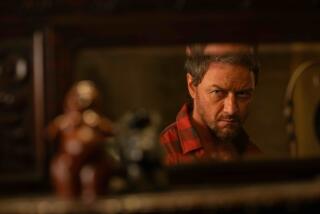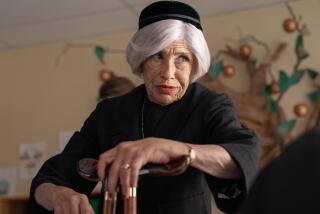‘Last House’ is just an empty shell
The original version of “The Last House on the Left” -- the 1972 feature debut of horror master Wes Craven and a primal tour of rape, mayhem, murder and madness -- was one of those movies that was spoken about even decades later with an uncertain mix of fear and reverence.
Now given the Hollywood remake treatment, with Craven as producer, Greek-born Dennis Iliadis directing and a script credited to Adam Alleca and Carl Ellsworth, the remodeled “House” is a mundane disappointment taken on its own and a deeply misguided refraction of the original.
Where the original, which was loosely based on Ingmar Bergman’s “The Virgin Spring,” made quick work of setting its story in motion, the remake includes plenty of patently unnecessary back story. Dad (Tony Goldwyn) is an emergency room doctor, Mom (Monica Potter) is a ball of nerves, and their delicate daughter (Sara Paxton) is a champion swimmer. Her fast friend (Martha MacIsaac, the drunken good girl in “Superbad”) lands them in the clutches of the crazed baddies.
As leader of the gang, Garret Dillahunt exudes a controlled sleazebag intelligence that is in marked contrast to the indelible frenzy created by the original’s David Hess.
The centerpiece of both films is the rape scene, marking the fulcrum point where the diffuse malevolence of the gang takes shape as unfiltered evil. The original derived no small part of its integrity from the documentary-like matter-of-factness with which it was shot, a purposeful artlessness that captured the grim intensity of what unfolded in a crummy patch of woods.
In the remake, Iliadis does restrain himself from overdoing the stylization, but the new setting of a verdant, scenic forest gives the proceedings an art-directed falseness, draining the audience-implicating authenticity and replacing it with the easy distance of knowing entertainment.
The original film was marked by a post-Manson paranoia, as the bacchanalian decadence of the hippie dream was taken to its illogical end of nihilistic violence. There, the young girl squabbled with her parents about whether to leave the house without a bra, and the trinket that would later give away her attackers is a peace symbol soaked in irony.
In the new version, the girl lingers over a keepsake from her recently deceased brother, transforming the film into a strange reaffirmation of family, while the added emphasis on survival and vengeance turns Goldwyn and Potter’s characters into heroic action parents.
It feels like the family is defending their entitlement to a second home, not their right to exist.
The promotional line for the original “Last House” asked viewers to remind themselves that it was, for all its visceral pangs of reality, “only a movie.” The greatest flaw with this remake is that it is too much only a movie, a tawdry, pointless whirligig that wants to spin amusement from misery without forcing its audience to question their enjoyment of it.
--
--
‘The Last House on the Left’
MPAA rating: R for sadistic brutal violence including a rape and disturbing images, language, nudity and some drug use
Running time: 1 hour, 49 minutes
Playing: In general release
More to Read
Only good movies
Get the Indie Focus newsletter, Mark Olsen's weekly guide to the world of cinema.
You may occasionally receive promotional content from the Los Angeles Times.











